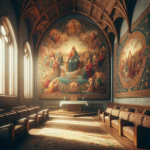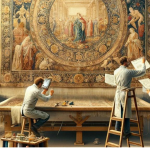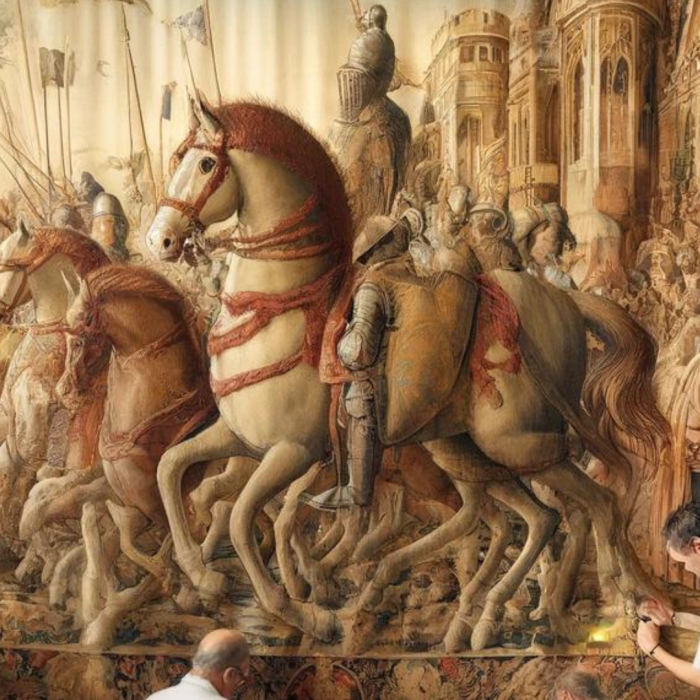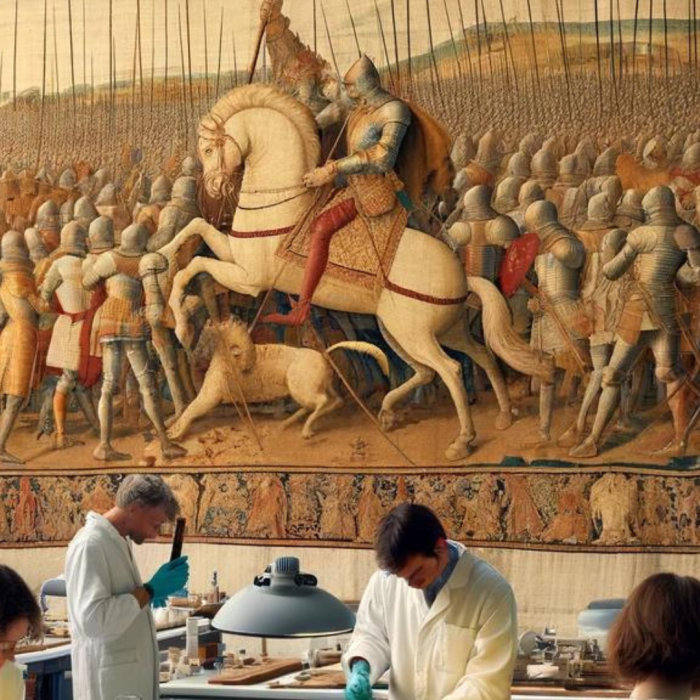Famous Tapestry Artists and their Works
Brief Explanation of Tapestry as an Art Form
Tapestry is a textile art form where intricate designs or images are woven into fabric using a combination of colored threads. Unlike other forms of weaving, tapestries are typically created on a vertical loom, allowing for detailed pictorial representation. This ancient art form has been used for centuries to adorn walls, tell stories, and showcase artistic expression through textile mediums.
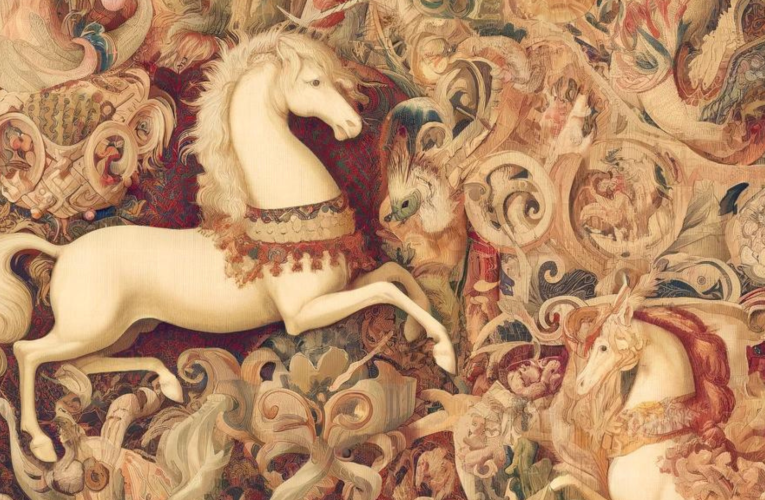
Importance of Weaving in Creating Tapestries
Weaving plays a crucial role in the creation of tapestries as it involves interlacing threads to form a fabric. The weaving technique allows tapestry artists to bring their designs to life by meticulously selecting and combining various colors and textures of yarn. The choice of weaving patterns and techniques determines the final appearance of the tapestry, including its level of detail, depth, and visual impact.
Overview of Famous Tapestry Artists and Their Contributions
- William Morris: A leading figure in the Arts and Crafts movement, William Morris was renowned for his exquisite tapestry designs. His intricate patterns, inspired by nature and medieval themes, revolutionized the tapestry art form, emphasizing craftsmanship and quality.
- Aubusson Workshop: The Aubusson Workshop in France has produced some of the most iconic tapestries in history. Artists and weavers from Aubusson contributed to the creation of large-scale tapestries depicting mythological scenes, royal portraits, and historical events, showcasing the region’s mastery in weaving and design.
- Jacqueline de la Baume-Dürrbach: Known for her contemporary tapestry works, Jacqueline de la Baume-Dürrbach brought innovation to the art form with her bold use of colors, abstract compositions, and geometric patterns. Her tapestries often convey a sense of movement and rhythm, pushing the boundaries of traditional tapestry design.
- Pieter Coecke van Aelst: A Flemish Renaissance artist, Pieter Coecke van Aelst was celebrated for his tapestry designs that reflected religious themes, classical mythology, and historical events. His collaborations with skilled weavers resulted in magnificent tapestries that adorned palaces and churches across Europe.
- Fiona Rutherford: A contemporary tapestry artist from Scotland, Fiona Rutherford is known for her innovative approach to weaving and tapestry design. Her works often blend traditional techniques with modern aesthetics, exploring themes of nature, spirituality, and cultural identity.
These famous tapestry artists have made significant contributions to the art form through their creativity, skillful weaving techniques, and unique artistic visions, leaving a lasting impact on the world of tapestry art.
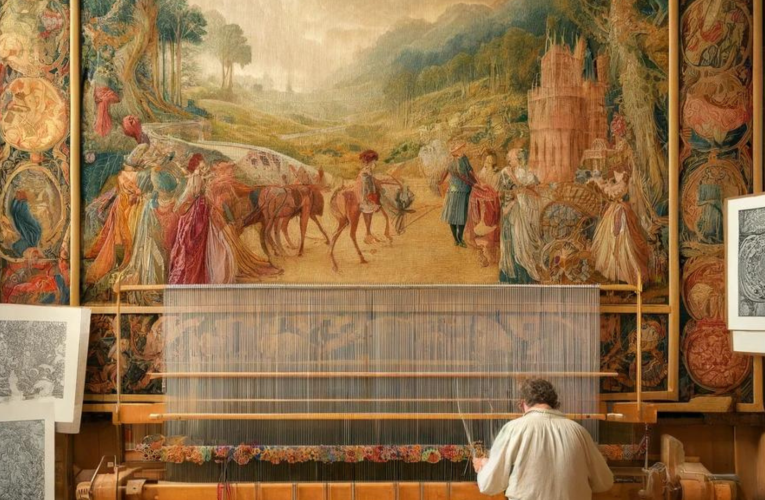
Early Pioneers in Tapestry Art
Historical Figures who Shaped Tapestry Art
Tapestry art has a rich history shaped by visionary artists whose works continue to inspire and captivate audiences today. These early pioneers were instrumental in elevating weaving to a form of high art, blending craftsmanship with storytelling and cultural expression.
Examples of their Notable Works
- Flemish Artists like Pieter Coecke van Aelst: Pieter Coecke van Aelst (1502-1550) was a prominent Flemish artist renowned for his contributions to tapestry design. His works often featured intricate patterns, mythological themes, and scenes of daily life. Notable examples include “The Story of Joshua” series, characterized by vibrant colors and detailed compositions that showcased his mastery of weaving techniques.
- French Artists such as Jean Lurçat: Jean Lurçat (1892-1966) was a pioneering French artist known for revitalizing the art of tapestry in the 20th century. His style, influenced by Cubism and Surrealism, brought a modern aesthetic to traditional weaving methods. Lurçat’s iconic work “The Apocalypse Tapestry,” inspired by medieval tapestries, reimagined biblical narratives with a contemporary twist, emphasizing bold shapes and symbolic imagery.
- Other Early Pioneers from Different Regions:
- Morris & Co. (England): Founded by William Morris in the 19th century, Morris & Co. played a significant role in the Arts and Crafts movement, producing exquisite tapestries with nature-inspired motifs and meticulous craftsmanship.
- Arras Tapestries (France): The city of Arras in France was renowned for its tapestry production during the Middle Ages, with artists creating grand-scale works for nobility and religious institutions, showcasing intricate details and historical narratives.
- Gobelins Manufactory (France): Established in the 17th century, the Gobelins Manufactory became a center for tapestry production under royal patronage. Artists like Charles Le Brun contributed to its prestigious collection, producing monumental tapestries that adorned palaces and public spaces with regal splendor.
By exploring the works of these early pioneers in tapestry art, we gain a deeper appreciation for the intricate weaving techniques, artistic vision, and cultural significance embedded in each masterpiece. Their contributions continue to inspire contemporary artists and enthusiasts, bridging the timeless beauty of weaving with the expressive power of art.
Modern Masters of Tapestry
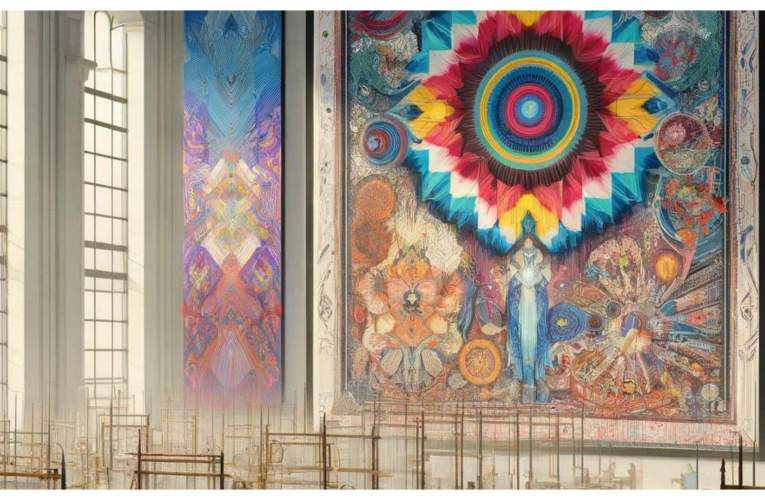
Transition to Modern Tapestry Artists and Their Innovative Approaches
The evolution of tapestry art has seen a dynamic shift towards modernity, with artists exploring innovative techniques and concepts. This transition has brought forth a new wave of creativity and experimentation in the realm of weaving and tapestry design.
Highlight Prominent Figures from the 20th and 21st Centuries
- Magdalena Abakanowicz: Renowned for her monumental textile sculptures, Magdalena Abakanowicz revolutionized contemporary tapestry art. Her works often explore themes of human experience, identity, and collective memory, pushing the boundaries of traditional weaving techniques.
- Helena Hernmarck: A master of color and texture, Helena Hernmarck’s vibrant tapestries are celebrated for their rich visual narratives and meticulous craftsmanship. Her ability to blend traditional weaving methods with modern aesthetics has earned her recognition as a leading figure in 20th and 21st-century tapestry art.
- Other Modern Masters: Several other artists have made significant contributions to the modern tapestry scene. For instance, Joan Baxter’s innovative use of materials and sculptural approach to weaving has garnered attention, while Archie Brennan’s exploration of abstract forms and dynamic compositions has left a lasting impact on the art form.
These modern masters, along with many others, continue to push the boundaries of tapestry as an art form, showcasing the versatility, complexity, and expressive potential of weaving. Their works serve as inspirations for aspiring artists and enthusiasts, highlighting the enduring relevance and beauty of tapestry in contemporary art.
Notable Works and Techniques
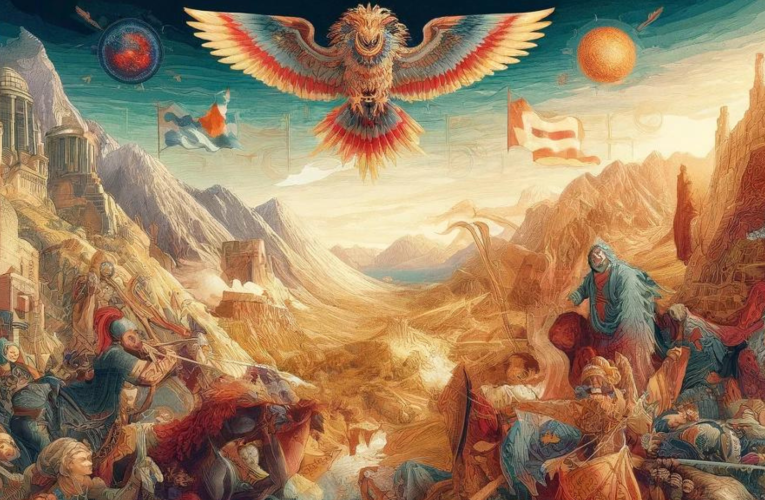
Dive deeper into specific works by famous tapestry artists
- Analyze the themes, motifs, and storytelling elements in selected tapestries: Explore renowned tapestries by artists such as William Morris, Jean Lurçat, and Joan Miró. Analyze how these artists use tapestries as a medium to depict themes like nature, mythology, and social commentary. Delve into the intricate motifs and symbolic elements that convey deeper narratives within the artworks.
- Discuss the weaving techniques used and their artistic impact: Examine the weaving techniques employed by famous tapestry artists, including techniques like gobelin, jacquard, and hand-dyeing. Discuss how these techniques contribute to the artistic impact of the tapestries, enhancing details, textures, and color gradients that enrich the overall visual experience.
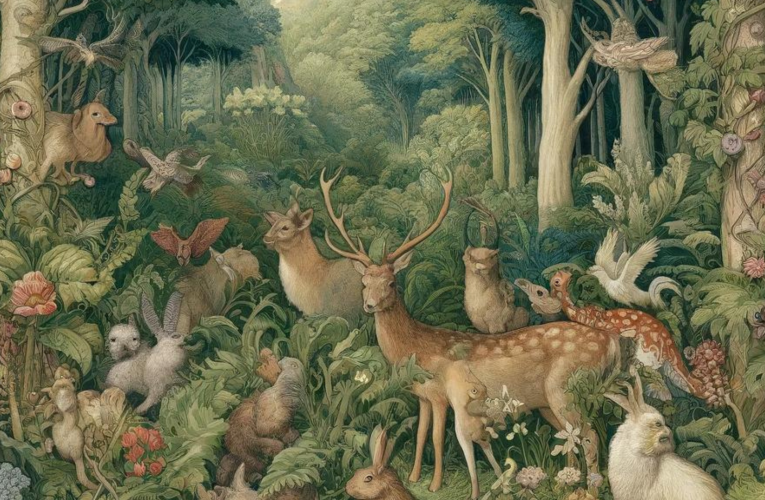
- William Morris’s “The Forest” tapestry, depicting lush woodland scenes with intricate flora and fauna motifs.
- Jean Lurçat’s “Apocalypse Tapestry,” a monumental work exploring themes of war, destruction, and hope through vivid imagery and powerful symbolism.
- Joan Miró’s “Catalan Peasant with a Guitar” tapestry, showcasing the artist’s iconic abstract style and playful use of color and form.
These images will not only complement your analysis of themes, motifs, and weaving techniques but also captivate your audience, allowing them to appreciate the artistic mastery of famous tapestry artists and their impactful contributions to the world of weaving and art.
Impact and Legacy
Influence of Famous Tapestry Artists on Contemporary Weaving and Art Practices
Famous tapestry artists have significantly shaped contemporary weaving and art practices through their innovative techniques, creative vision, and dedication to the craft. Their influence extends beyond traditional tapestry making, inspiring new generations of artists and pushing the boundaries of textile art.
Contributions to Preserving and Evolving the Tradition of Tapestry
These artists have played a crucial role in preserving and evolving the tradition of tapestry by blending traditional methods with modern concepts. Their experimentation with materials, colors, and storytelling techniques has revitalized the art form, making it relevant in today’s artistic landscape.
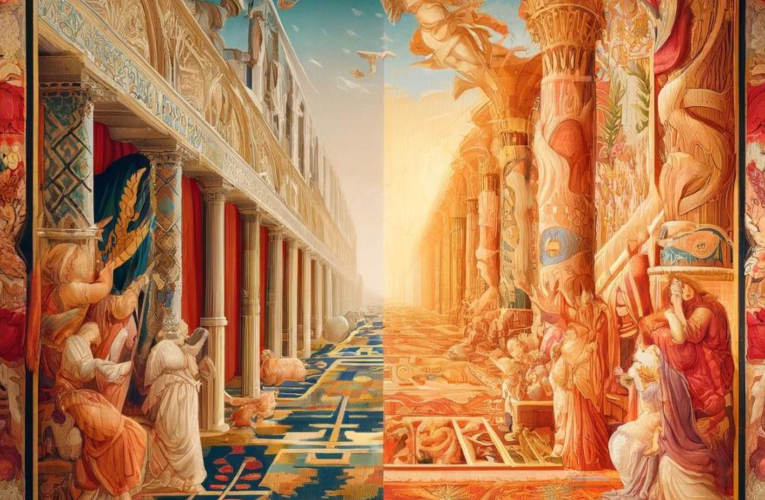
Enduring Legacy and Impact on the Art World
The enduring legacy of these artists lies in their lasting impact on the art world. Their mastery of weaving, coupled with a deep understanding of artistic expression, has earned them recognition and admiration globally. Their works continue to inspire awe and admiration, serving as a testament to the rich history and enduring allure of tapestry as an art form.
By exploring the lives and works of famous tapestry artists, we gain insights into the intricate world of weaving, art, and tapestry, appreciating the beauty and craftsmanship that define this timeless art form.

